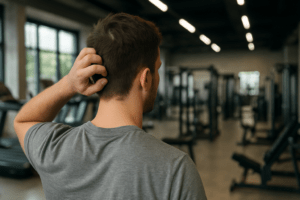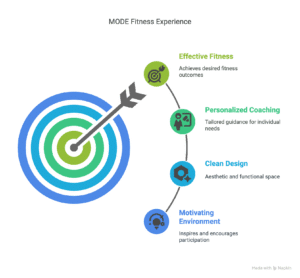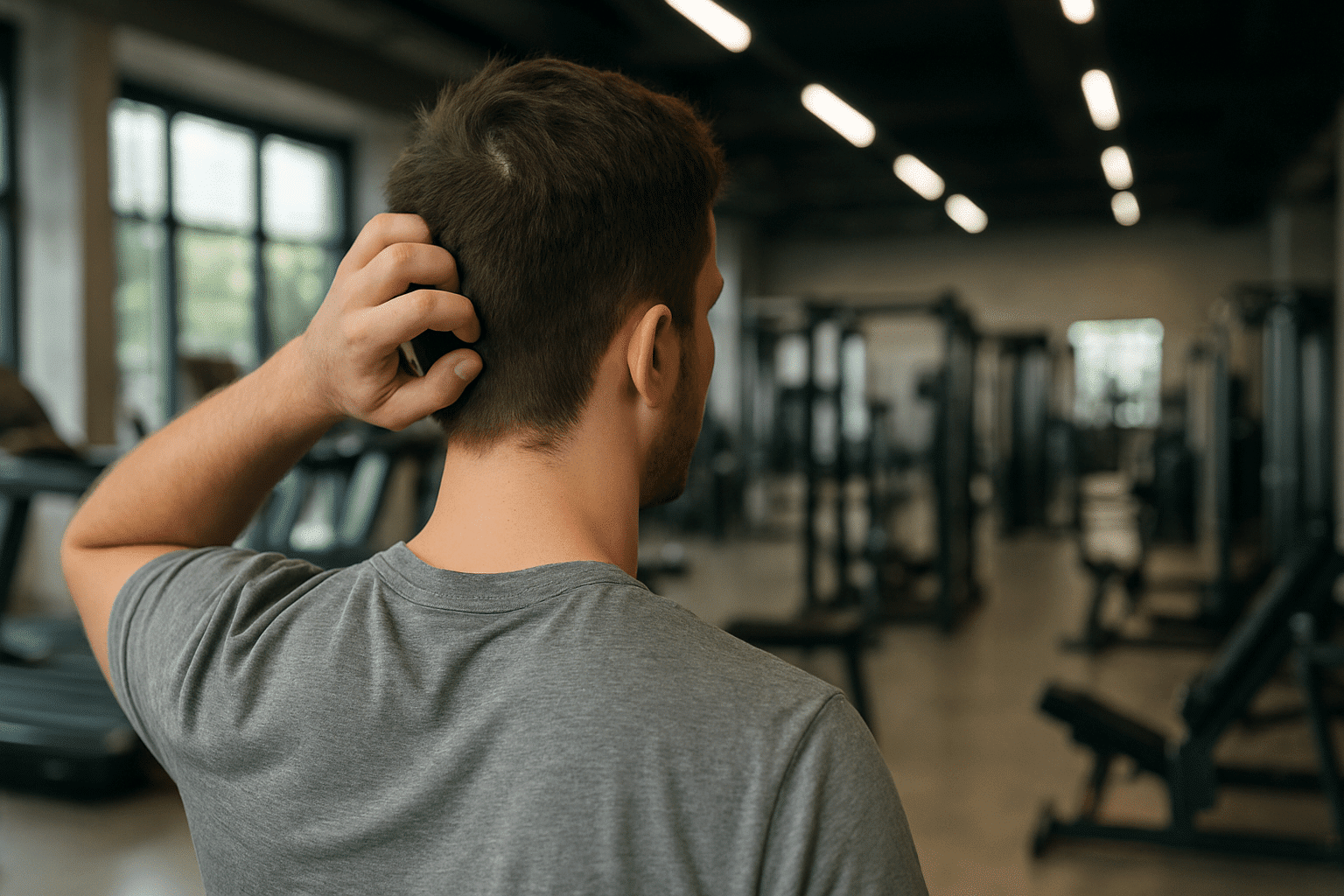A Practical Guide for Real People, With Boutique Benefits for the West Loop Crowd

Introduction: The Great Gym Frequency Debate
How often should you go to the gym? As often as you brush your teeth or as often as you post a thirst trap? The question might sound playful, but it reflects a deeper truth: most people are unsure where consistency ends and obsession begins. Go too little, and progress stalls. Go too much, and burnout or injury can sneak in like an uninvited guest.
This is the tightrope walk of modern fitness. Somewhere between the weekend warrior and the everyday grinder lies the real sweet spot, a rhythm of training that’s sustainable, effective, and life-enhancing. But here’s where MODE Gym enters the chat. Nestled in the heart of West Loop, MODE isn’t about chasing trends or glorifying grind culture. It’s about crafting a training lifestyle that’s refined, intentional, and rooted in real results. No chaos, no cluttered floors. Just elevated equipment, expert coaching, and a space that feels more like a boutique wellness haven than a generic gym floor.
What the Experts Say: The Baseline for Human Movement
Let’s ground this conversation in science before we style it. Most reputable health organizations agree on a foundational blueprint for movement. The average adult should aim for at least 150 minutes of moderate-intensity aerobic activity each week. That could be brisk walking, cycling, or swimming. Alternatively, if you prefer more intensity, 75 minutes of vigorous cardio like running or HIIT will do the job.
But movement doesn’t stop at cardio. You also need to challenge your muscles. That means at least two strength training sessions per week that hit all the major muscle groups: legs, hips, back, abdomen, chest, shoulders, and arms.
Think of these as the minimum effective dose. It’s not about chasing perfection, it’s about building a foundation that supports long-term health, cardiovascular function, metabolic strength, and mental clarity. At MODE, this isn’t just a checklist. It’s the baseline we build upon with curated workouts that blend science, luxury, and a touch of West Loop sophistication.
How Often Should You Go? The Three-Tier Framework
One size doesn’t fit all when it comes to gym frequency. Your ideal schedule depends on your goals, experience, and lifestyle. To help you calibrate, here’s a breakdown of three practical tiers to guide your week.
Three Days a Week: The Wellness Starter Pack
This is the gateway to consistency. Three gym visits a week is enough to satisfy the minimum recommendations for both strength and cardio. It works especially well for beginners, busy professionals, or anyone easing into a fitness rhythm without overwhelming their calendar.

A typical approach might include full-body strength training on Monday, Wednesday, and Friday, with light movement or rest on other days. At MODE, these three days won’t feel like compromise, they’ll feel like a curated escape from the noise. With clean, considered design, personalized coaching, and an environment that motivates without overwhelming, three days at MODE can be more effective than six chaotic sessions elsewhere.
Four to Five Days a Week: The Balanced Builder
For those chasing clear aesthetic goals, performance milestones, or serious lifestyle upgrades, four to five days a week hits the sweet spot. This schedule allows you to blend focused strength training with strategic cardio and still leave room for recovery.
You might split your week into muscle groups: upper body, lower body, core; or alternate between strength and conditioning days. The advantage of MODE is that it’s designed to support this kind of elevated programming. Whether it’s small group training, drop-in conditioning classes, or recovery lounges that rival spas, the infrastructure is already in place to support your goals with clarity and class.
Five or More Days a Week: The Passion-Driven Peak
If fitness is your lifestyle or you’re training toward a specific event or performance goal, five or more gym sessions a week might feel not only natural but necessary. This approach requires precise programming, serious discipline, and a deep respect for rest and recovery.
At this level, overtraining is a real risk, and progress depends as much on what you do outside the gym as what you do inside. That’s where MODE’s edge sharpens. From access to recovery tools like infrared therapy and body scanners to trainers who monitor your volume and intensity to help you avoid burnout, it’s the kind of environment where ambition meets support. You bring the drive, MODE provides the blueprint.
Sample Weekly Breakdown: Realistic and Refined
Here’s what a practical training week might look like at each tier. These aren’t rigid formulas, they’re flexible starting points for building momentum.
Three Days a Week
- Monday: Full-body strength
- Wednesday: Light cardio or mobility plus core
- Friday: Full-body strength
Four to Five Days a Week
- Monday: Upper-body strength
- Tuesday: Conditioning or HIIT
- Thursday: Lower-body strength
- Friday: Active recovery or yoga
- Saturday: Full-body metabolic circuit
Five or More Days a Week
- Monday: Push (chest, shoulders, triceps)
- Tuesday: Pull (back, biceps)
- Wednesday: Cardio endurance
- Thursday: Lower-body strength
- Friday: Core and mobility
- Saturday: Functional training or sport-specific drills
- Sunday: Rest or low-impact recovery (e.g. sauna, stretching, guided breathwork)
At MODE, these schedules become more than just to-do lists. They evolve into lifestyle rhythms, crafted with intention and supported by amenities that make every visit feel like an experience, not a chore.
Rest, Recovery, and the Art of Sustainable Progress
Progress doesn’t happen while you’re lifting. It happens while you’re recovering. That’s a truth most gym-goers learn the hard way, when motivation outpaces mobility or when soreness becomes a badge of honor rather than a signal to rest. But the science is clear: recovery isn’t a luxury, it’s a non-negotiable.
Taking one or two full rest days each week allows your muscles to repair, your nervous system to reset, and your body to actually adapt to the stress you’ve put it through. For high-performers, rest might include active recovery. Think walking, mobility work, or low-intensity swimming, but the principle remains the same. You grow stronger when you allow yourself to slow down.
At MODE, recovery isn’t an afterthought. It’s built into the ecosystem. Whether it’s post-workout access to infrared therapy, thoughtfully designed stretching spaces, or simply the kind of quiet, aesthetic environment that puts your mind at ease, MODE encourages recovery as much as effort. Because sustainable progress isn’t just about what you lift, it’s about how intelligently you recover between lifts.
More Than Just Minutes: Making Each Session Count
You could spend hours in the gym and still get less done than someone training with purpose for 45 minutes. Frequency matters, yes, but effectiveness comes down to the quality of each session. What are you doing with your time? Are your workouts guided by goals, or are you just logging minutes?
Intentional movement is the difference-maker. For beginners, that might mean learning how to hinge, push, pull, and squat with proper form. For intermediates, it could be about progressive overload and refining technique. For seasoned lifters, it’s programming that aligns with performance, periodization, and energy cycles.
That’s where the boutique approach matters. MODE doesn’t leave your workouts to guesswork. Trainers are available to guide, refine, and elevate. The atmosphere inspires presence. Every machine, weight, and layout decision is curated to keep you focused, not distracted.
Time at MODE isn’t measured by how long you stay. It’s measured by how well your time moves you forward. Because better beats longer, and focused beats frantic. Every single time.
Why Your Gym Environment Matters and Why West Loop Deserves Better
Where you train shapes how you train. The energy of the space, the people around you, the cleanliness, the lighting, even the playlist, all of it affects your experience. Walk into a big-box gym and you’ll often find a sea of machines, long waits for squat racks, loud distractions, and a vibe that feels more like a chore than a choice.
West Loop doesn’t settle for average in food, fashion, or design. So why should fitness be any different?
MODE was built for people who expect more from their gym. It’s not just about equipment, it’s about atmosphere. It’s about walking into a space that feels curated, intentional, and empowering. From the minimalist interiors to the small-group training approach, from thoughtful recovery zones to trainers who remember your goals, MODE gives West Loop residents a gym that rises to meet the rest of their lifestyle.
Because when your gym reflects your valuesm your aesthetic, your ambition, your standards. Showing up becomes something you look forward to. Not something you have to power through.
Conclusion: Frequency Isn’t Just a Number. It’s a Lifestyle Choice
The question of how often you should go to the gym doesn’t have one answer. It depends on who you are, what you want, and how you move through your week. Three days might be perfect for one person, five for another. The key is choosing a rhythm you can maintain, a structure that serves your body, and a space that makes it all feel worth it.
At MODE, that’s the goal. To make fitness something you grow into, not out of. To elevate the experience so that it matches your standards and respects your time. To give you a gym that’s less about checking boxes and more about crafting momentum.
Want a schedule that fits your life and a space that feels like an upgrade? Start with MODE. Your body, and your calendar, will thank you.

